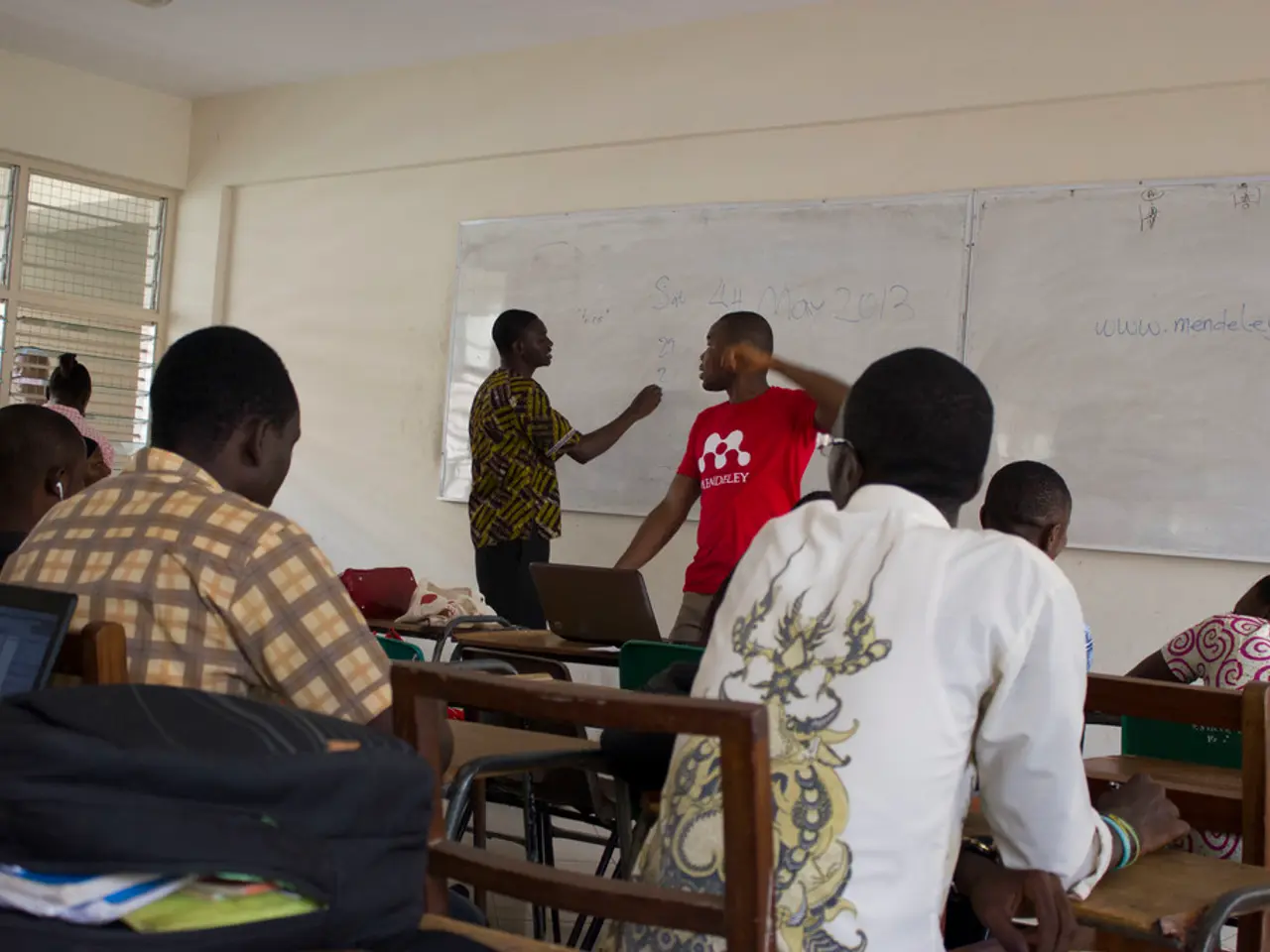Strengthening Educational Teamwork through the Strategy of Think-Pair-Discuss
The Think-Pair-Share (TPS) method has proven to be a successful instructional strategy in various educational settings, from middle school science classrooms to university lectures, and primary schools in urban areas. This collaborative learning approach stands as a pivotal method, fostering an environment conducive to critical thinking and deeper understanding among students, regardless of the evolving educational landscape.
How Does Think-Pair-Share Work?
The TPS method consists of three distinct phases: thinking, pairing, and sharing. During the thinking phase, students reflect on a specific question or topic individually. This initial phase promotes reflection and allows students to formulate their own ideas before engaging in discussion.
In the pairing phase, students discuss their ideas with a partner. This stage encourages effective communication, promotes diverse viewpoints, and builds a sense of community. The final stage, sharing, involves pairs presenting their combined insights to the larger class, fostering collective knowledge construction.
Effective Implementation Strategies
To ensure the TPS method's success, teachers should employ effective implementation strategies. These include clear question framing, allowing sufficient think time, structured pairing, guided sharing, and teacher facilitation.
- Clear question framing: Use thought-provoking, open-ended questions aligned with lesson objectives.
- Sufficient think time: Allow students quiet individual time to process and formulate ideas to accommodate diverse thinking speeds.
- Structured pairing: Assign or rotate pairs to promote varied perspectives and inclusion.
- Guided sharing: Use whole-class discussion, digital collaborative tools (e.g., Google Docs, Padlet), or breakout rooms in virtual environments to share and expand ideas.
- Teacher facilitation: Monitor pairs, prompt deeper thinking, and ensure balanced participation during sharing phases.
Benefits of Think-Pair-Share
The TPS method offers numerous benefits. It actively involves all students in the learning process, including quieter or less confident individuals, by combining individual thinking with peer discussion. The initial independent thinking phase promotes reflection, and the pairing phase encourages testing and refining ideas, enhancing deeper cognitive processing.
Moreover, the TPS method fosters a collaborative learning environment by promoting effective communication, encouraging diverse viewpoints, and building a sense of community. Sharing ideas in pairs builds communication and social skills in a safe setting; the final class-wide sharing fosters collective knowledge construction.
Addressing Challenges
Common challenges in using the TPS method include ensuring all students feel comfortable participating, managing time efficiently, and maintaining a supportive learning environment. To mitigate these challenges, educators should create a safe and inclusive classroom environment, establish clear expectations and norms for collaboration, and encourage gradual integration of the TPS method.
Assessing Effectiveness
The effectiveness of the TPS method can be assessed through various qualitative and quantitative measures, such as observations, surveys, student performance metrics, feedback from students, and comparing academic performance before and after implementing the method.
Future of the Think-Pair-Share Method
The future of instructional strategies highlights the versatility of the TPS method, with the integration of technology, seamless incorporation into digital platforms, and the use of formative assessments becoming increasingly prevalent. Adaptations of the TPS method include integrating technology, varying group sizes, modifying prompts, and customizing the duration of each phase.
In conclusion, the Think-Pair-Share method offers a versatile and effective instructional strategy, balancing individual accountability with collaborative interaction. Its simplicity and flexibility allow integration into in-person and virtual classrooms, supporting a variety of learning preferences and technologies. By implementing the TPS method thoughtfully and strategically, educators can enrich the learning experience and prepare students for success in an interconnected world.
[1] Cooper, D., & Swan, K. (2014). Peer learning in higher education: A systematic review. Studies in Higher Education, 39(4), 433-452.
[2] Gunawardena, C. M., & Zittle, D. (2000). Computer conferencing in distance education: A systematic review. Review of Educational Research, 70(4), 431-466.
[3] Kagan, S. (2009). Cooperation and competition: Effective classroom strategies for improving student achievement. Association for Supervision and Curriculum Development.
[4] Kagan, S. (2010). Engage students with PQ4R: Predict, Question, Read, Recite, Reflect, Review, and Reinforce. Association for Supervision and Curriculum Development.
[5] Rosethorn, A. B. (2013). Peer learning in online and blended learning environments: A systematic review. Review of Educational Research, 83(1), 151-187.
- Integrating the Think-Pair-Share method into e-learning platforms allows remote learners to benefit from its collaborative and cognitive advantages.
- The development of teamwork skills is a significant outcome of the Think-Pair-Share method, as it encourages effective communication and diverse viewpoints.
- In education-and-self-development contexts, the Think-Pair-Share method can be applied beyond traditional classrooms, leveraging digital tools for collaborative learning and idea exchange.




